- Reclamation
- News & Multimedia
- News Stories
- 2017 Eclipse
2017 Eclipse
Written by: By Jay Dallman, WYAO
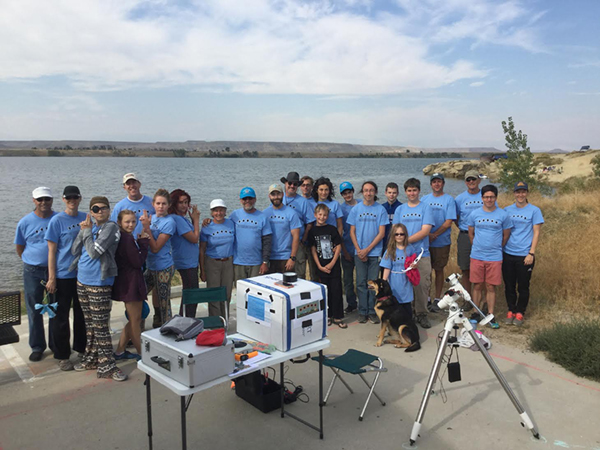
Los Alamos School group at Pilot Butte Reservoir, which is 10 miles below the Wind River Diversion Dam.
A total eclipse of the sun was observed on August 21, 2017 along a 60-mile-wide band crossing the state of Wyoming from the northwest to the southeast. The last total eclipse appearing in the United Stated occurred in 1979 and last time one was viewed in Wyoming was back in 1918. The next total eclipse in the U.S. will be in 2024 and the next opportunity to see one in Wyoming will be in 2092. The 2017 solar eclipse spanned the entire U.S. from the west coast to the east coast. The next total eclipse to span the entire country will be in 2045.
Wyoming residents were joined by a large number of out-of-state visitors who were drawn to the clear skies for the August eclipse. There was minimal light pollution and ample viewing space along the path of totality in the Cowboy State. By some estimates, the population of Wyoming more than doubled and perhaps almost tripled on the day of the eclipse. When the long anticipated celestial event arrived, as promised, it did not disappoint.
The centerline of the path of totality passed through the southern outskirts of Casper and very near the Wyoming Area Office (WYAO). At the centerline in Casper, totality was observable for 2 minutes and 28 seconds. The shadow of the moon on the earth swept by the area at more than 1,700 miles per hour. During totality, a few bright stars and planets could be seen in the darkened sky. The temperature dropped around 15 degrees and some viewers donned jackets or sweaters. Many reported hearing crickets chirping as if it were evening and a round of shouts and cheers was heard at the moment totality was reached.
The Wyoming Area Office worked with our managing partners to develop temporary campsites and viewing areas. Extra portable restroom facilities, traffic control and law enforcement personnel were added for the event.
Three of Wyoming’s State parks located on Reclamation surface adjacent to our reservoirs were in the path of the eclipse. In a four day period leading up to and including the day of the eclipse, Glendo State Park estimates they accommodated more than 45,000 visitors. Normally they get about 39,000 visitors during the entire month of August. Boysen State Park saw roughly 40,000 visitors compared to a normal August total of 16,000. Guernsey State Park hosted nearly 32,000 visitors during the same period which tripled their normal August visitor count.
Several educational institutions set up instrumentation to view and record the eclipse. In most cases, in addition to teaching students, they offered advice and assistance to the general public. The University of Wyoming astronomical team set up at Boysen Reservoir, the Colorado Springs astronomical group set up at Glendo Reservoir, and the Los Alamos High School set up at Reclamation’s Pilot Butte Reservoir.
Los Alamos High School participated in the Citizen CATE (Continental-America Telescopic Eclipse) Experiment. Citizen CATE’s goal was to capture images of the inner solar corona using a network of 68 telescopes operated by citizen scientists, high school groups and universities. Normally the bright photosphere, or solar surface, overpowers the Sun’s faint, wispy outer atmosphere called the corona. The corona can only be observed when the photosphere is covered up, in this case, by the moon.
CATE planned to produce a scientifically unique data set: high-resolution, rapid cadence (one photo every 10 seconds) white light images of the inner corona for 90 minutes along the 2,500 mile path of totality.
By all accounts, the eclipse was spectacular. For many it was a once in a lifetime experience. Reclamation’s managing partners commented on how well-mannered the visitors were. They were generally orderly and considerate and in many cases were credited with taking away more trash then they brought in. Many of the first time visitors to Wyoming commented on the wonderful experiences they had and said they would like to return to Wyoming soon for another visit.

University of Wyoming astronomical group set up at Boysen Reservoir.
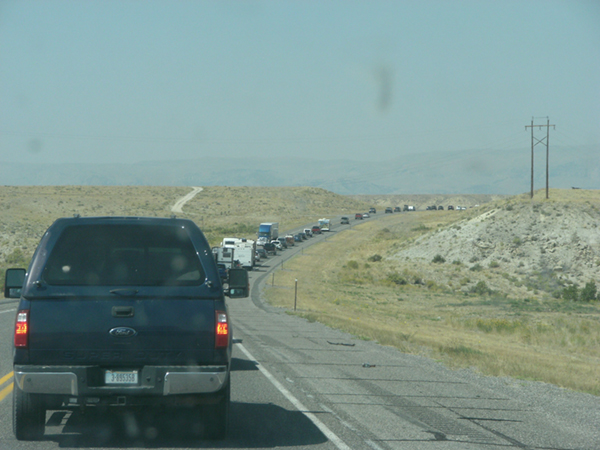
Long line of vehicles leaving Boysen Reservoir following the eclipse.
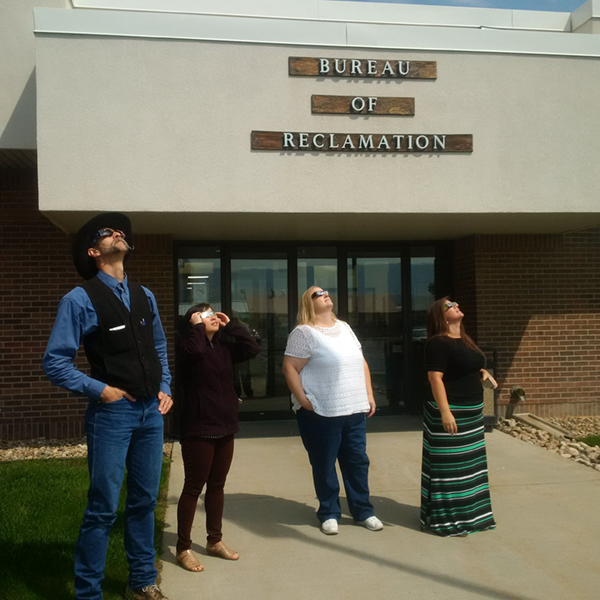
Reclamation employees at the Wyoming Area Office test their solar eclipse glasses.
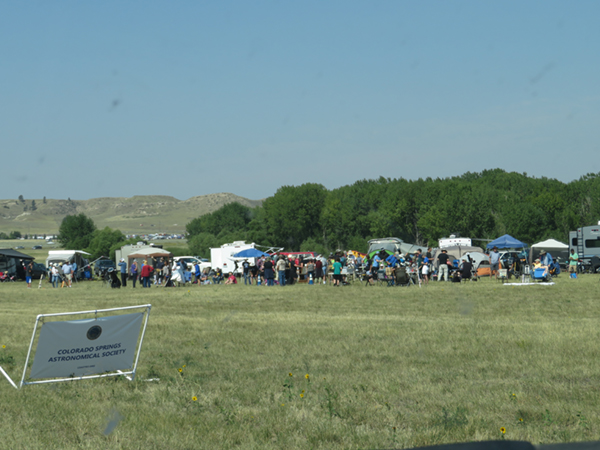
Colorado Springs Astronomical Society group at Glendo Reservoir.
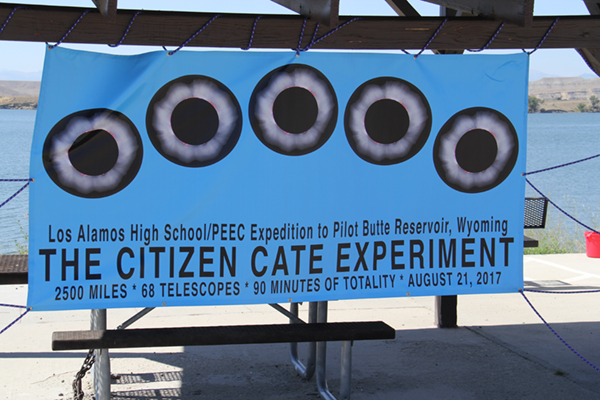
Los Alamos High School banner at Pilot Butte Reservoir.
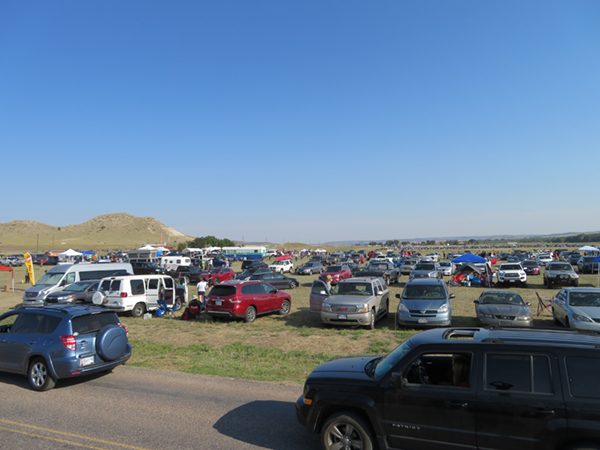
Overflow parking at Glendo State Park.
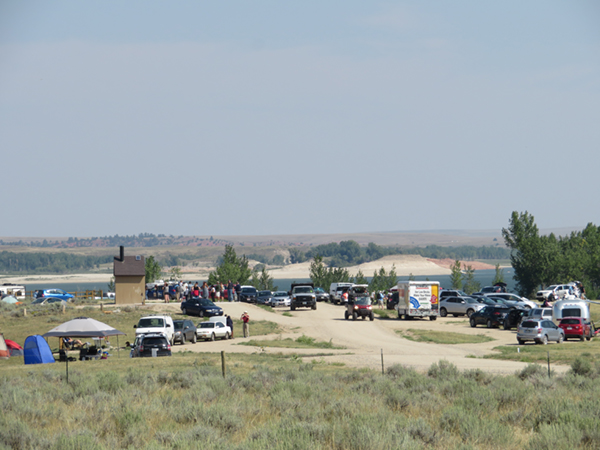
Overnight campers and day use visitors stake out their viewing areas at Glendo Reservoir.
Published on January 12, 2018

